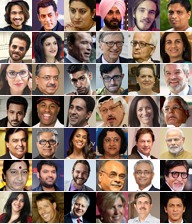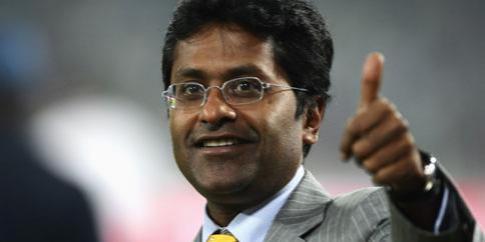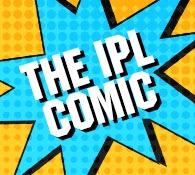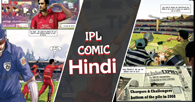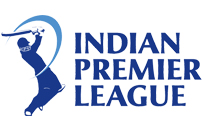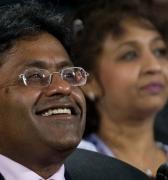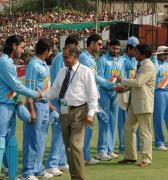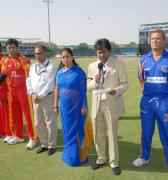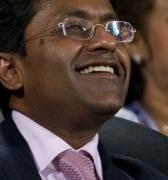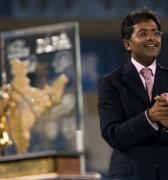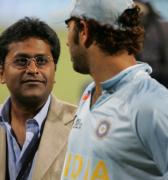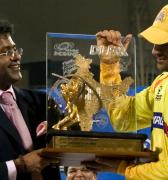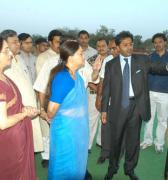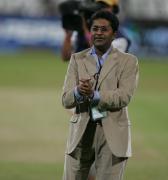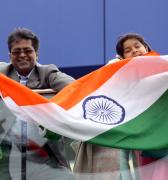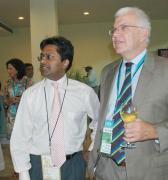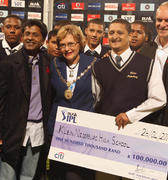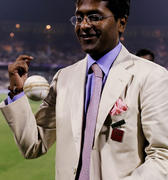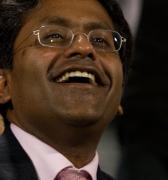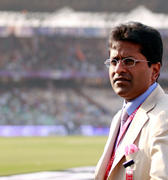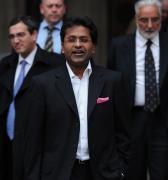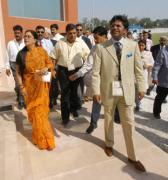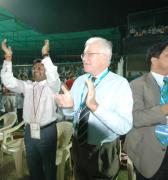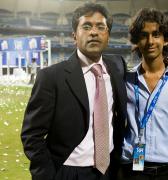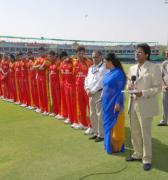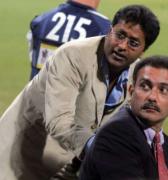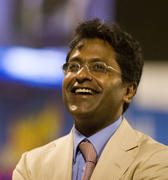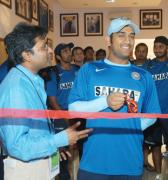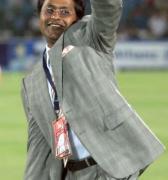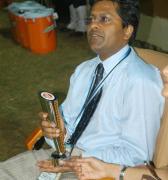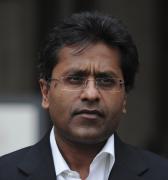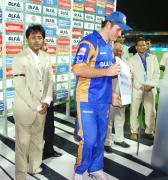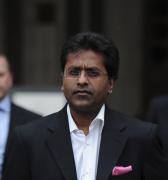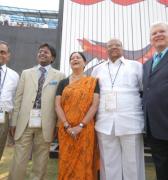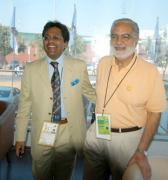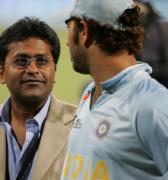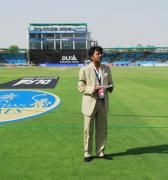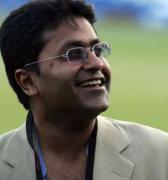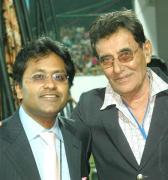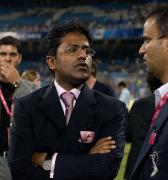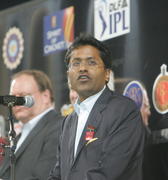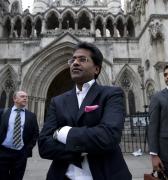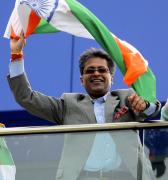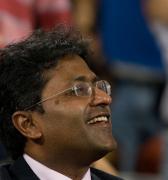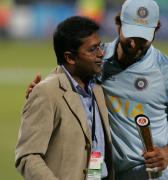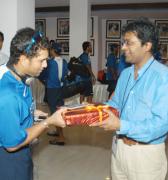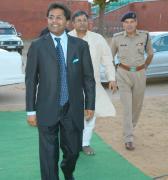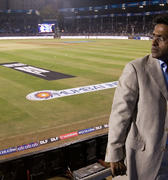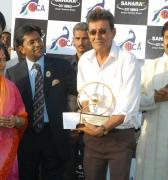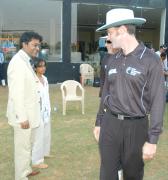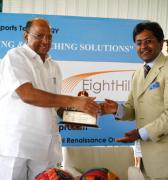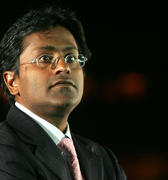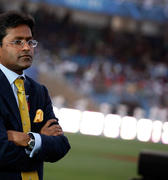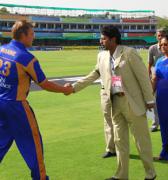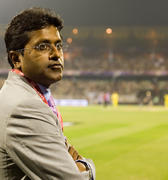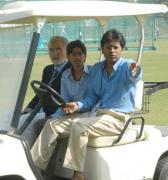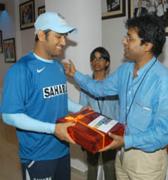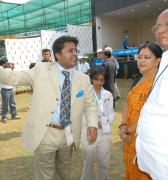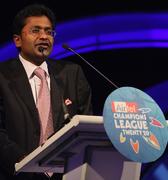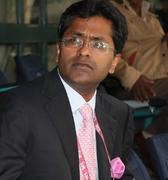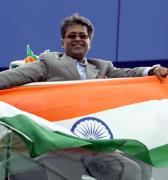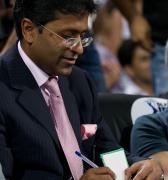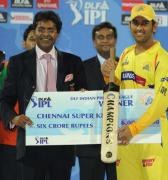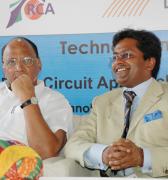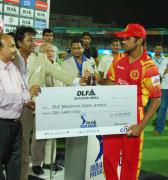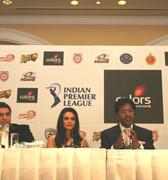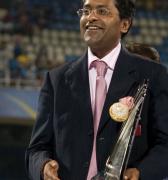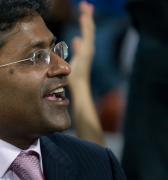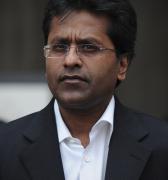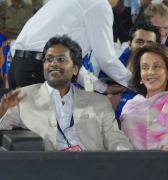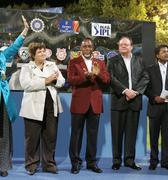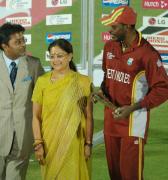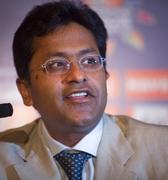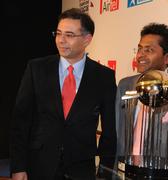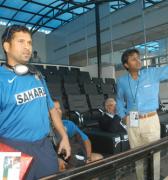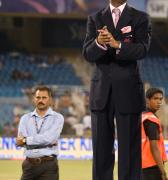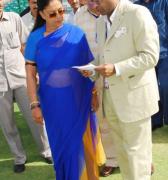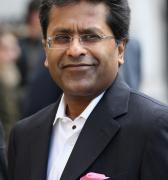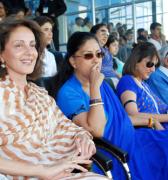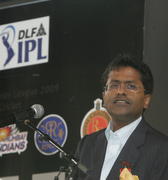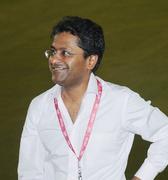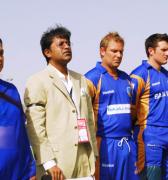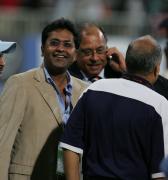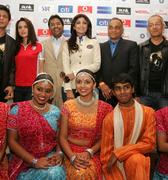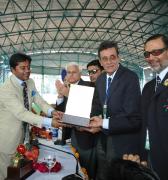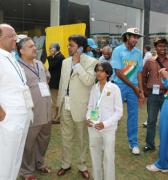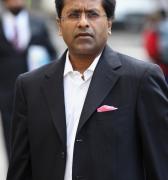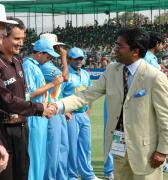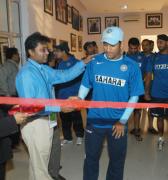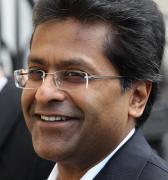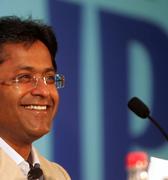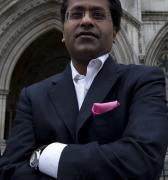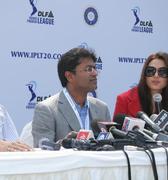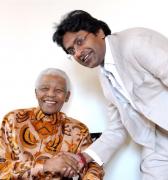![]()
Q. You wouldn't remember this, but we met a few times in 2005, when I was with Outlook magazine. On one of those occasions, at Mohali, during the first Test of the India-Pakistan series, you spoke about BCCI's plans to start its own television channel. You also spoke of your dream to organise a city-based limited-overs cricket tournament, in the usual 50-overs-a-side format. Later you gave the world the Indian Premier League. How did the transition take place?
A. Yes, Suveen, I do remember meeting you - but a lot of time has elapsed since the time we last met and spoke to each other. Actually, the dream to start a city-franchise-based limited-overs cricket tournament for me started way back in 1994, when I partnered with ESPN to launch the ESPN channel in India. In 1994 I envisioned a world-class cricketing league India could call its own, something along the lines of the NBA or the NFL in America or even the English Premier League for that matter. The second idea I was toying with in my head was how sports and business could be merged for the greater good of the game. Lastly, some other critical aspects that begged to be answered were how one could further propagate the popularity of the sport and increase the fan base for cricket in India and boost the sport at the domestic level, while doing so to improve the level of the sport. Yes, there was a 50-over-a-side proposal, but I felt the proposal to start a T20 tournament, instead, contained the right dose of cricket and entertainment. It was a like a family going out for an evening of entertainment, or for a Bollywood movie-all done and dusted in three hours.
Thus, the IPL, as we see it today, is a hybrid league designed after looking and studying the shortcomings of the various global leagues. The English Premier League was one of the models we studied. The others were the North American sporting leagues like the National Football League, the National Hockey League, the National Basketball Association, and the two baseball leagues AL and NL. We took the best parts of these leagues to arrive at our own hybrid model that would suit our requirements and the Indian economic and financial environment. The IPL was thus designed with due thought and consideration to all the necessary safeguards. That is how the IPL evolved and finally came into being.
Q. Can Mr. Subhash Chandra's Indian Cricket League be called the precursor to the IPL? Did it play a role in convincing you of the efficacy of 20-overs-a-side?
A. Quite frankly, though a lot people and global media have stated that the IPL was a knee-jerk reaction by the BCCI and the global cricket boards to the ICL, I personally never ever saw it as that, or, for that matter considered the league sponsored by Mr. Subhash Chandra as competition. The ICL was an unrecognised and unauthorised league, which had no sanction from the BCCI or the International Cricket Council. Thus, my very basic objection to the ICL was concerned with its very existence, which was questionable at the least. More importantly, in my mind, it is important to compare two like entities; you cannot compare two disparate events and draw parallels. The IPL was and will continue to be an attempt to further propagate the popularity of the sport in a country where the sport was already considered a religion. It was also a very serious attempt to increase the fan base for cricket in India. Furthermore, Indian cricket needed this boost at the domestic level to improve the level of cricket being played. Importantly, no one today can say that the IPL has not achieved those objectives-look at the improvement in the quality of cricket being played due to the nurturing of talent by the IPL. I had faith, and believed that the IPL would turn into a global phenomenon and help take cricket to the next level. Coming to the format of Twenty20 cricket, I had heard about its success in England and thought to myself that this format could work. But the day India won the inaugural World T20 Cup in South Africa, all fears disappeared. On landing in India the reception that the players got was phenomenal and I knew that in the Twenty 20 format we had a winner on our hands.
Q. In the early days of Twenty20, after it started in England, BCCI was extremely sceptical of the format. Its secretary Niranjan Shah openly denounced it in 2006. What made you believe in this format? How did you persuade the others in the BCCI to go for it? Did India's victory in the inaugural T20 World Cup in South Africa swing it for you?
A. You are absolutely spot-on about the scepticism for the Twenty20 format within the BCCI during the initial phase. But at that time it led me to think more about the game and how cricket as a sport more than two centuries old had maintained its relevance. The game has, through the years, adapted itself to the requirements of modern entertainment, television and advertising. But it was not as simple as that.
During the planning phase of the IPL everyone at the BCCI, including myself, took a 'watch and learn' approach to see how the Twenty20 format developed. Many other short-form variations of the sport were proposed over the years and the BCCI wanted to be certain of the sustainability of this format. But sustainability aside, care had to be taken not to damage the existing formats of the game. When I first conceived the Indian Premier League in 1994 I was not fully convinced about the format that we would adopt and, as I mentioned earlier, was contemplating a 50-over format. But I was certain of one thing and that was the fact that India needed a sporting league like the NBA and NFL of the US and the English Premier League in the UK. The second idea that I was toying with in my head was how sports and business could be merged for the greater good of the game. Finally, I looked at the Twenty20 format of the game which was pioneered by the England and Wales Cricket Board (ECB) and was convinced that with a few changes this format would perhaps best suit Indian and global audiences if packaged attractively. And that is exactly what we set about doing for the IPL. The rest, as they say, is history. Obviously, India winning the inaugural ICC WorldT20 in South Africa gave a huge boost to what we were trying to do. The effect of India's victory was that the format became the favored format of the game among 76 per cent of the population, which was a very significant change. That was when I was finally satisfied that we had created a global cricketing entertainment product, which would generate its strength from the millions of fans and sponsors alike in the years to come.
Q. The IPL introduced several new dimensions to cricket; two of them are players auction and cheerleaders. In your view, which are the other path-breaking things that the IPL did? How did you think of them and how critical do you think they were to its success?
A. If memory serves me right, the Fast Company magazine named the IPL the most innovative company in India in 2010, ahead of the likes of Airtel and Infosys. Importantly, the reason why we were accorded this unique accolade was that in our very first season itself, the IPL had created what amounted to a new economy of cricket. In fact, the IPL was ranked the most innovative company ahead of the likes of BMW, Frito-Lay and Alibaba.com in the overall list and that was a huge honor.
All of this was possible as everything we did or attempted to do was path-breaking and innovative, to say the least. Consider this, even before a single ball was bowled, the IPL, with its broadcast deal with MSM, was a billion dollar baby.
The IPL is a hybrid league carefully crafted to change the face of cricket in India and help improve the domestic game at the grassroots level. It is designed to provide opportunities to upcoming cricketers to showcase their talents while sharing a platform with some of the world's best cricketers. Not to mention the mentoring that this talent would receive from the best coaches and support staff to help them improve their game.
The IPL also marked the first time India adopted the Twenty20 format and propagated a city-versus-city fan rivalry. It also marked the first time international players of the stature of the Graeme Smith, Ricky Ponting, Sanath Jayasuriya, Mkhaya Ntini, Daniel Vettori, Andrew Symonds, all amongst the top 100 players in the world, played for a domestic league outside their home countries.
The IPL also marked a unique amalgamation of the country's two biggest passions, cricket and Bollywood. It was the first time a domestic cricketing event was covered live (or deferred Live) globally.
It ushered in an era of professional sport in which a sportsman could earn a living from that sport, which also spawned leagues in several other sports. It also revolutionised Indian sport by way of franchisees and ROI (return on investment) in sport-concepts that were hitherto never spoken of in relation to any Indian sport.
The IPL also helped expand the size of the pond as I see it -by drawing in the uninitiated and a whole new generation of fans, and thus changed the very marketing dynamics of the sport. All of this was critical and path-breaking in its own way.
Q. The involvement of movie stars helped the IPL capture public imagination. Where did that come from and how critical a role, in your view, did it play in IPL's success?
A. Intriguingly, a lot of people have asked me if the mix of franchisees was contrived. The answer, though, is that our mix of Bollywood celebrities and corporate India was derived by default thanks to a very open and transparent bidding process. Frankly, I could not have written a better script even if I had tried. Living in India, one simply cannot underestimate the effect Bollywood and cricket have on the Indian masses. Amalgamate the two and you have all the essential ingredients of a blockbuster hit. I cannot deny that Bollywood franchise owners and team ambassadors did play an integral role in adding the glitz and glamour required to attract cricket fans into the stadia. But, once inside the stadia, it is the international quality of competitive cricket that has kept the fans coming in game after game. Thus, at the very core of the IPL offering is the cricket, while the cheerleaders, the Bollywood entertainment and everything else are the peripheral packaging that makes the IPL that much more attractive to its fans.
Q. Were there other interesting, innovative ideas that you chose not to implement?
A. The IPL was all about experimenting and innovating to keep it fresh and relevant to our fans. Thus, we attempted innovative ideas every time. What worked was initiated into the league and what did not was left out.
To be honest, if we did not think of it, we did not do it. But in my mind ideas that were good were the mid-innings Time Outs that many puritans had issues against. Then there was the live commentary by a player or umpire from the field of play that was very unique and gave viewers an on-ground perspective. We also wanted players to wear heart-rate meters that would showcase their heart rate during high-pressure situations, like a tight last-over finish, or while a bowler ran in to bowl, or when a fielder attempted a catch. We thought the heartbeat sound, along with the heart rates on the big screens, would give spectators a unique experience. But some players expressed their reluctance and we respected that. Allowing cameras to follow players into the dressing rooms before and after matches was another idea that was floated. But Indian viewers' sensibilities weren't attuned to that, so I vetoed it.
There were also suggestions in favour of reducing the 30-yard circle to make the game pacier and give batsmen and fielders something else to think about. Eventually, though, that idea was scrapped because I didn't want to tamper with the fabric of the sport. Then there was the idea of giving online viewers an option to choose from 12 different camera angles on YouTube. I remember the meeting in San Francisco with YouTube's top bosses. They were nervous because until then they had just live-streamed an hour-long U2 concert and wanted to have just the one extra camera view. Realising their apprehension, I acquiesced, but set up an entire production unit to create a consolidated feed for YouTube - the Fun Feed, which was a huge hit among online viewers.
Twitter approached me with the intention to be a part of the IPL. I suggested we do live ball-by-ball commentary with hyperlinks to every delivery in video. I even roped in a sponsor, but Twitter wasn't ready to sign off on a two-year non-revenue sharing deal.
Q. Was the final product, the IPL, as you had visualised it? Were there surprises? Did you face obstacles? How did you overcome them?
A. I was, back then, like an expectant father optimistic and quietly confident that once my baby took its first fledgling steps into the world, it would grow from strength to strength. But to say that the IPL turned out exactly as I had visualized, that would not be true, especially, given that the IPL has turned into a global phenomenon. I had no doubt that if we built on the IPL platform year-on-year, we would have a format that could revolutionise the way cricket was played, watched and followed globally.
To say that there were no surprises and obstacles, again, would be inaccurate. There were many detractors even within the BCCI that thought that the IPL would never succeed. There were question marks over the Twenty20 format and whether Indians would like it or not. There were questions over whether the Top 100 cricketers would participate in what essentially was a domestic league. There were doubts about whether the on-field action would be as intense and passionate as a one-day international. There were question marks on whether Indian audiences, which do not turn out in large numbers to encourage a state side in domestic cricket, would turn out to cheer a city-based franchise to which they had no allegiance. These were obviously just a few of the obstacles we had to face head-on and surmount.
These internal questions aside, there were other obstacles, like the terrorist attacks in Mumbai and bomb blasts outside the stadium in Bengaluru. Players and fans also needed to be assured of their safety and security. The move to South Africa in the face of the Indian general elections was par for the course, as we had set out to achieve an objective closely linked to the larger good of the game in India. My simple formula was that I never took no for an answer. Sometimes believing in what you want actually pushes you to do the impossible.
Q. What role did Steve Ross, Stefan Szymanski, and Ian Preston played in the IPL's development? What made you choose to work with them?
A. I ended up brainstorming with many people and most of the league commissioners from across the world before developing the IPL concept.
Q. Shifting the IPL to South Africa in the second season was a stupendous feat. How did you pull it off? I know it is not possible to capture it in an email like this, but can you please mention some critical issues that faced you and how you handled them?
A. Conducting the second season of the IPL was a commitment that the BCCI had made to our franchise owners, broadcast partners and sponsors, and fans of the IPL worldwide, especially since all of them had embraced and loved the IPL in its first season. South Africa emerged as the favorite mainly due to its amazing weather, which was better compared to England's.
Once the BCCI decided on South Africa, we set about roping in the finest strategic partners there. Frankly, it was all about believing in the team we had. IMG was fantastic and all our strategic partners in South Africa hit the ground running from day one. CSA (South Africa's cricket board) was simply fantastic and with its help we were ready to stage Season 2009. I would not say that there were no hitches along the way, but all our preparation for Season 2009 in India did pay off immensely. We worked with the best advertising agency and the best event and entertainment agency to put on a cricket carnival like never before. My team worked night and day to execute a near flawless Season 2.
More important was the manner in which the South African cricket fans embraced the IPL and let us into their hearts and homes, which was simply fantastic. It was heartwarming to see young and old cricket fans flock to the stadia and cheer teams from India. All this when the South African season was over, .the wickets were tired, and rain threatened us. But the South African fans we managed to attract to the stadia were second to none and their love for world-class cricket was unparalleled. Having said that, I must say that without the support and cooperation of the South African Government nothing would have been possible.
Q. Why did you take such stern action against Mr. Chandra's ICL? That prompted people to levy charges of being anti-competitive. Could both ICL and IPL have existed in harmony?
A. As I have said earlier, the ICL was an unrecognised and unauthorised league, which had no sanction either from the BCCI or the International Cricket Council. To put it simply, the ICL was illegal in every sense of the word. Furthermore, the ICL had players past their prime playing in it and nowhere near the Top 100 cricketers of the world that graced the IPL stage. Thus, any comparisons are immaterial.
Q. A lot has happened in the last few years at the IPL. What are the things, which, in your view, should not have happened? If you were still running it, how different would it be compared to the form it has today?
A. I feel very pained that Mr. N. Srinivasan has brought the BCCI to such a state that the apex court of India, namely the Supreme Court, had to step in and take decisions for and on behalf of the IPL. It is critical that the Supreme Court does everything in its power to clean up the mess that is Indian cricket today. This is something I would never have let happen. Mr. N. Srinivasan has been running the Board as his own personal fiefdom and it is easy even for a layperson to see just how power hungry he has become.
The Supreme Court has thankfully seen through the ugly facade that was the new three-member committee put together by the BCCI at the Emergent Meeting held on Sunday - such is the rot that has set in within the BCCI.
I ask you, did you, during my tenure, hear even one single allegation of match fixing coming to the fore?
If you have read the Justice Mudgal report you would clearly see what I am saying. All this while I alone have been the voice of reason talking openly and publicly about things like conflict of interest in terms of Mr. N. Srinivasan's ownership of CSK and him being an office bearer in the BCCI. I have also been rebuking the ludicrous theory of Mr. Gurunath Meiyappan being simply a cricket enthusiast and not an owner. Who else has been talking as openly and publicly about the malaise of spot-fixing and the cover-ups by players and administrators to safeguard the interests of a few?
We need to understand the implications and ramifications of all of this, which are far-reaching indeed. It is critical that we now work hard to restore the faith of the Indian cricket fan in the sport, as that is currently, in my estimate, at an all-time low.
Q. What could have been done to keep the IPL clean and free of controversy?
A. We have the benefit of hindsight now and so it would be easy to say what I would have done had I been in the BCCI. But the real question is, now that we know what is wrong, what can we do to set things right? It is critical that we all do our utmost to purge Indian cricket of the malaise that ails it and all the rot that has set in. Once the cleaning is done, it would be left to the cricketers to take the gentleman's game forward with the respect and dignity it deserves.
Q. The IPL gets blamed for many things: too much money spoiling young cricketers, an erosion of skill, etc. How do you react to this?
A. It is common for people to pull you down every time they get a chance, and so when everyone blames the IPL for all that is wrong, I simply stand up and say please also look at what the IPL has helped achieve. I have always maintained that at the beginning when there were no takers for IPL franchises I did seek out friends and asked them to invest in the concept. But it is only now that we have managed to make the IPL a global success the questions of making money arise. What if the IPL had failed? Would you have raised the same question again?
Every international cricketer worth his salt today wants to play in the IPL-why? The IPL is already a trend-setter for the game of cricket globally and a global brand that will never die. It has been built with a solid foundation and despite all the controversies it will continue to spread and hold its own. People like Mr. Srinivasan may come and go but the tournament will continue to flourish.
Proof of that is the fact that other cricket playing counties are trying hard to replicate the magic of the IPL without success. Thus, instead of looking at the negatives, it is critical that we look at the positives and what we have achieved with the IPL.
Q. Cricket seems to be becoming more and more reliant on money from television. Is that a healthy thing? What can be done about it? Should anything be done about it?
A. Why Cricket? Any sports administrator worth his salt will tell you that all sports are reliant on broadcaster monies for a solid foundation. Only then can that sport grow. It is then up to the broadcaster and the association to work together to grow the popularity of the sport and attract new fans to the fold. The more the eyeballs, the more advertising revenues, all of which are intermeshed and critical for any sport worldwide to grow from strength to strength.
Courtesy: Business Today




